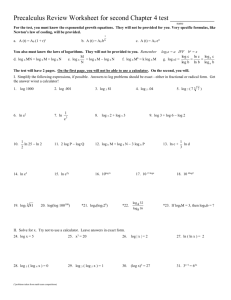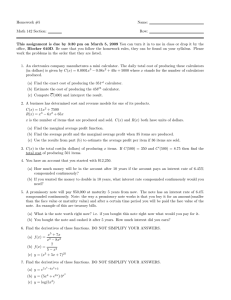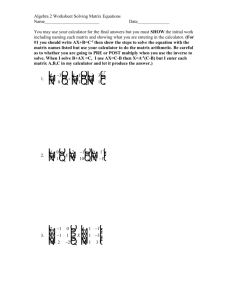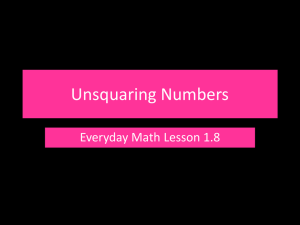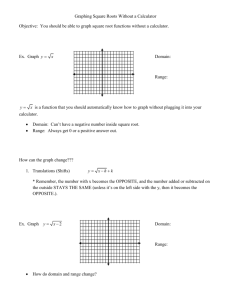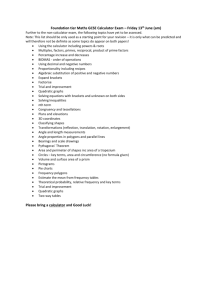Activity 5.2.2 Revisiting e and Compound interest
advertisement
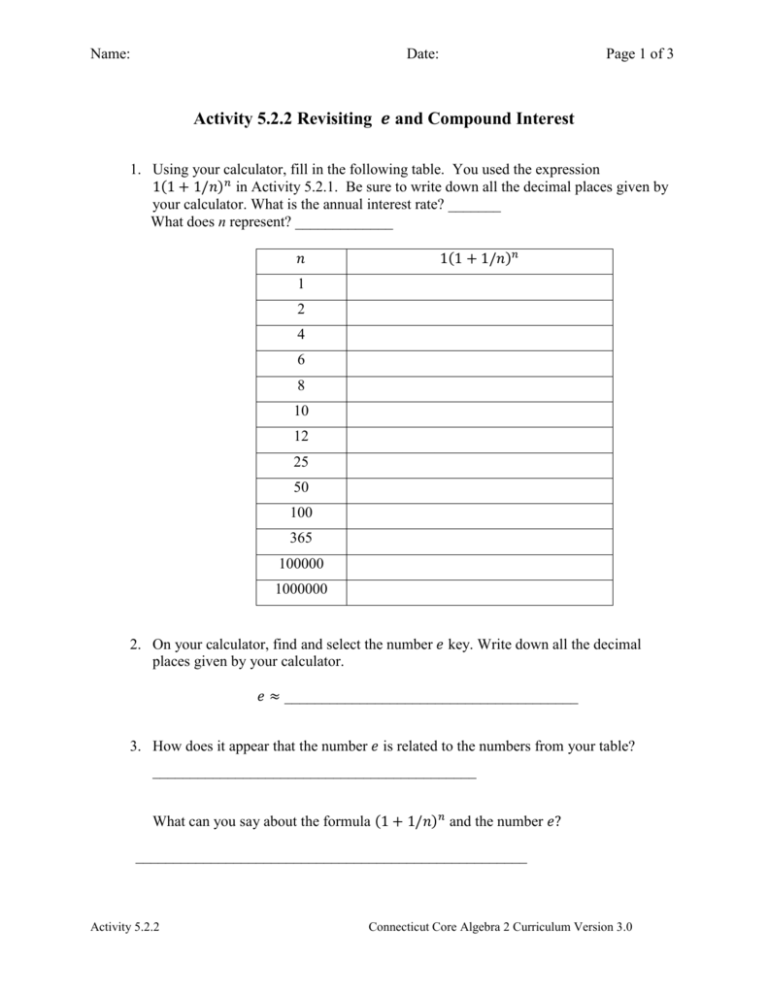
Name: Date: Page 1 of 3 Activity 5.2.2 Revisiting 𝒆 and Compound Interest 1. Using your calculator, fill in the following table. You used the expression 1(1 + 1/𝑛)𝑛 in Activity 5.2.1. Be sure to write down all the decimal places given by your calculator. What is the annual interest rate? _______ What does n represent? _____________ 𝑛 1(1 + 1/𝑛)𝑛 1 2 4 6 8 10 12 25 50 100 365 100000 1000000 2. On your calculator, find and select the number 𝑒 key. Write down all the decimal places given by your calculator. 𝑒 ≈ _______________________________________ 3. How does it appear that the number 𝑒 is related to the numbers from your table? ___________________________________________ What can you say about the formula (1 + 1/𝑛)𝑛 and the number 𝑒? ____________________________________________________ Activity 5.2.2 Connecticut Core Algebra 2 Curriculum Version 3.0 Name: Date: Page 2 of 3 4. Suppose you have $2000 in a savings account that has a 4% interest rate compounded once each year. How much would you have at the end of 1 year? Let 𝐴 represent the total amount of money. 5. Again suppose that you have $2000 in a savings account that has an interest rate of 4% but is now compounded twice a year. This means that you would have a return of (4%/2) = 2% twice a year. How much would you have at the end of one year 6. Now again suppose that you have $2000 in a savings account that has an interest rate of 4% but is now compounded four times a year. This means that you would have a return of (4%/4) = 1% four times a year. How much would you have at the end of one year? 7. Using your calculator, fill in the following table. Be sure to write down all the decimal places given by your calculator. 1(1 + .04/𝑛)𝑛 n 1 2 4 12 365 100000 1000000 8. On your calculator, find the number 𝑒 .04 . Write down all the decimal places given by your calculator. 𝑒 .04 = _______________________________________ Activity 5.2.2 Connecticut Core Algebra 2 Curriculum Version 3.0 Name: Date: Page 3 of 3 9. How does the number 𝑒 .04 relate to the numbers from your table? ___________ 10. What can you say about the formula (1 + .04/𝑛)𝑛 and the number 𝑒 .04 ?__________ 11. Now again suppose that you have $2000 in a savings account that has an interest rate of 4% but it is compounded continuously for the year. What will the amount be after a year of continuous interest? ___________________ Activity 5.2.2 Connecticut Core Algebra 2 Curriculum Version 3.0

